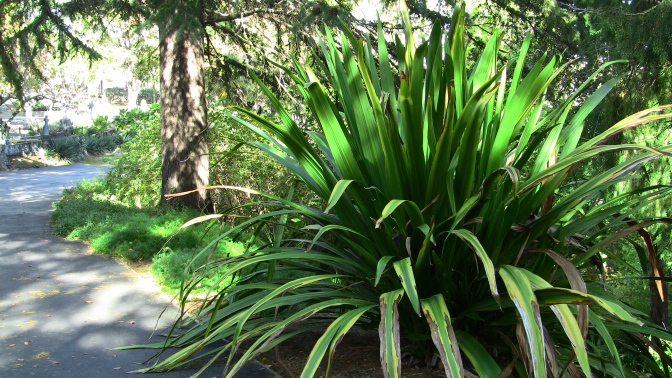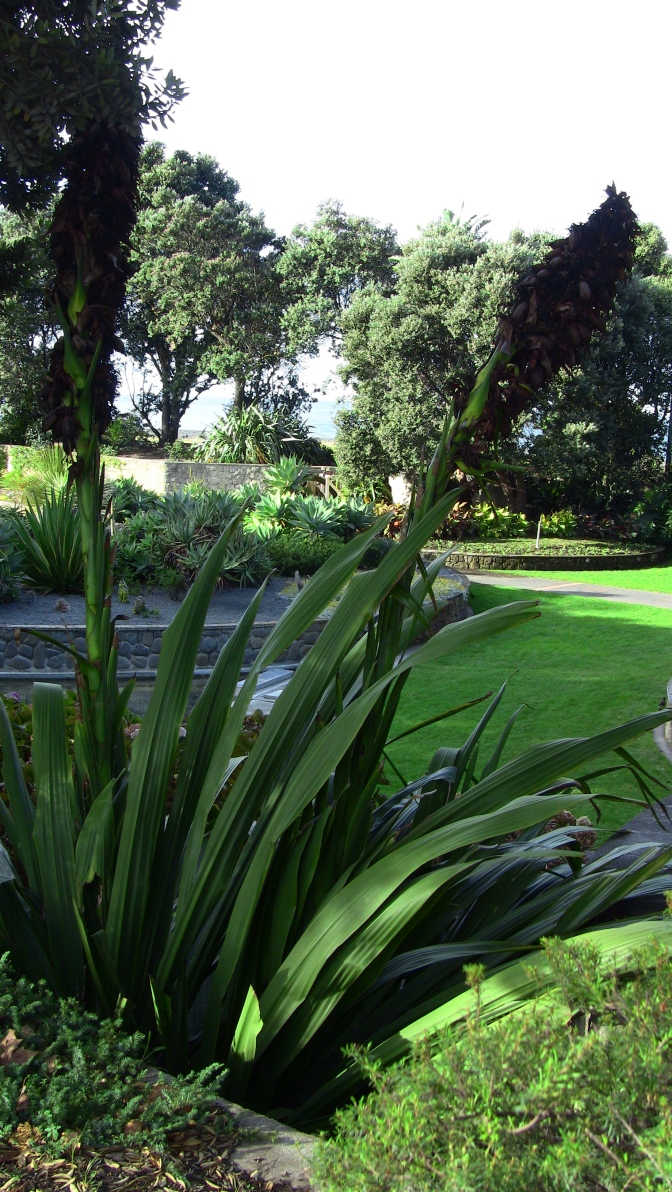Back home in the Pacific Northwest, every gardener who’s been around for more than a week has heard about Phormium tenax, or New Zealand flax. With wide strap-like evergreen leaves, coming in many color variations and growing to very large proportions, flax has become somewhat of an ‘it plant’. At the same time, it can be marginally hardy depending on where you are, and even in some of the safer areas it can occasionally succumb to our persistant frosts.
Today I’d like to introduce you to Australia’s version of flax. Or remind you, if that’s the case. Either way, this is not a plant that is commonly seen in the US, especially outside of some gardens in southern California and apparently the UC Berkeley Botanical Gardens. Doryanthes palmeri (Giant Spear Lily) is not truly related to flax, nor is it a grass. Previously classified as an agave, it is now part of it’s own genus of plants that diverged from what would eventually become agaves. Basically, it’s an old prototype for agaves.

Adapted to grow well in very intense sunlight and dry conditions, it does surprisingly well in consistantly moist, shady gardens. In fact, it seems to grow larger in these spots. The flower of D palmeri doesn’t show up for the first time until the plant is over a decade in age, and after that is sporadic at worst and biannually at best. Huge, just like the rest of the plant, it weighs down the tree trunk-like flower spike with several pounds of seeds and nectar like a knapsack full of a hobo’s goodies.

I keep mentioning that D palmeri is a large plant, but it’s difficult to put it into scale with words. I could say that it is taller than phormium tenax will ever be, but that seems awfully large. And just how big would that be, anyway? Newly divided and planted pups that I have seen are impressive, to say the least. The tallest leaves in the rosettes top out at around 15 feet tall. The leaves are evergreen, of course. They persist for several years, and eventually a single plant will form a house-sized colony of 15 foot long leaves, with giant bright red beacons of flowers beaming from towering spires above the plant.

The first time I saw one of these dinosaurs I thought it was a remarkably large flax. After spotting one with an 8 inch diameter flower spike with huge seed pods at the end, I thought it must have been some weird agave. Then, after I noticed that flowering wasn’t marking the end of life for the plant, I decided that it was an amazing plant that I had to find more of! I have enjoyed encountering it all over New Zealand’s north island, and hope to find it more often back home now that I know what to look for.

The only downside to this plant is that it is only as frost tolerant as coastal flax. That could be turned around, I guess. The good thing about this plant is that it is probably as frost tolerant as coastal flax! Back home, I’m sure it would have to be planted in a microclimate within a microclimate, but it takes well to growing in a pot. The sheer number of gardens that it grows in, here in New Zealand, makes me think that it must be commercially available somewhere. If I can manage to acquire this plant at home, I will be posting about it. If not, I will be wishfully thinking about it. Only time will tell!